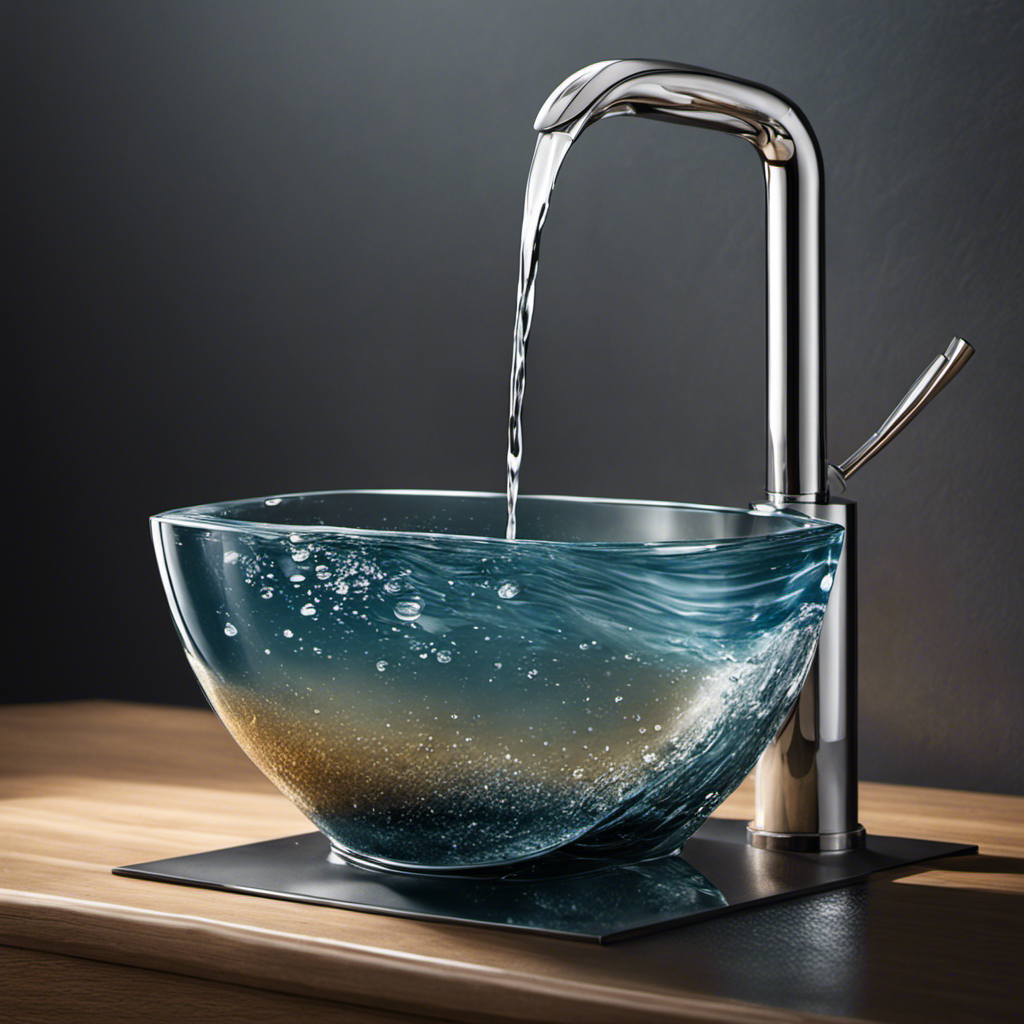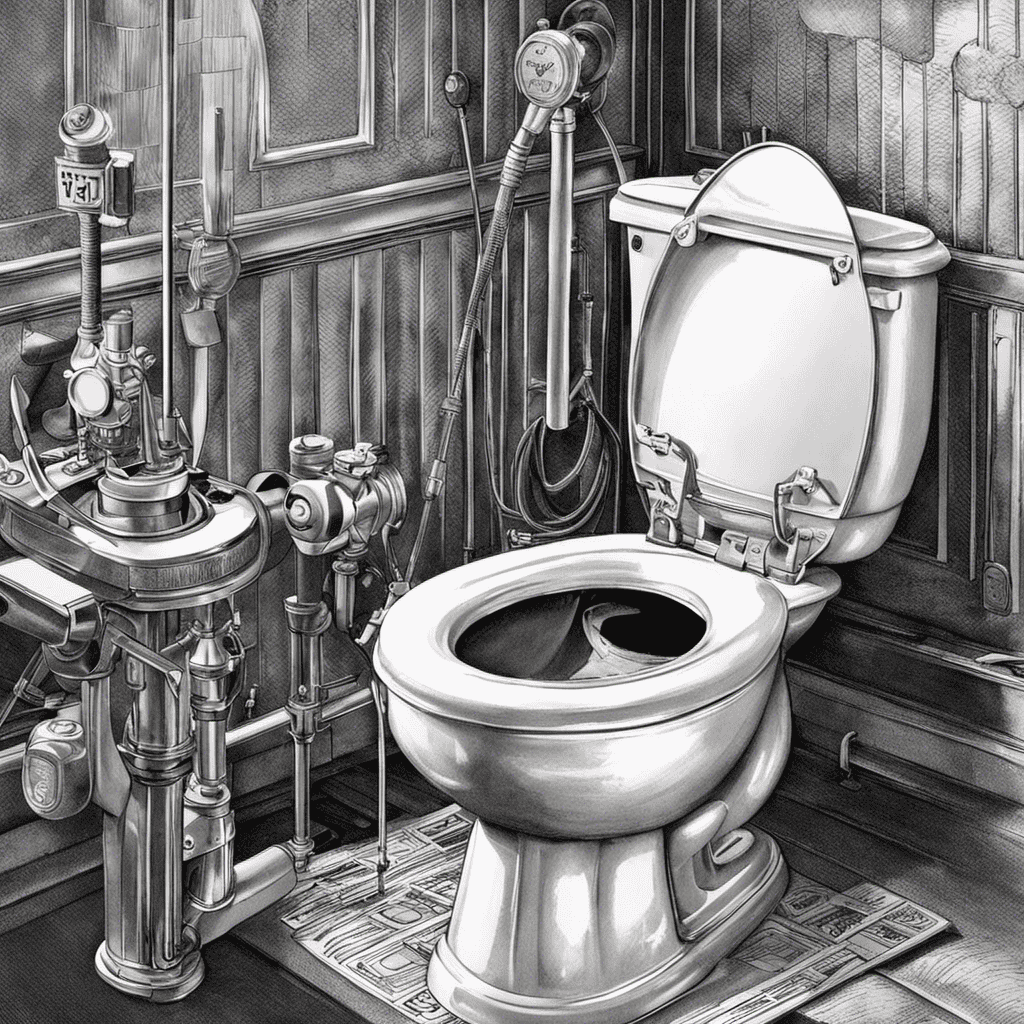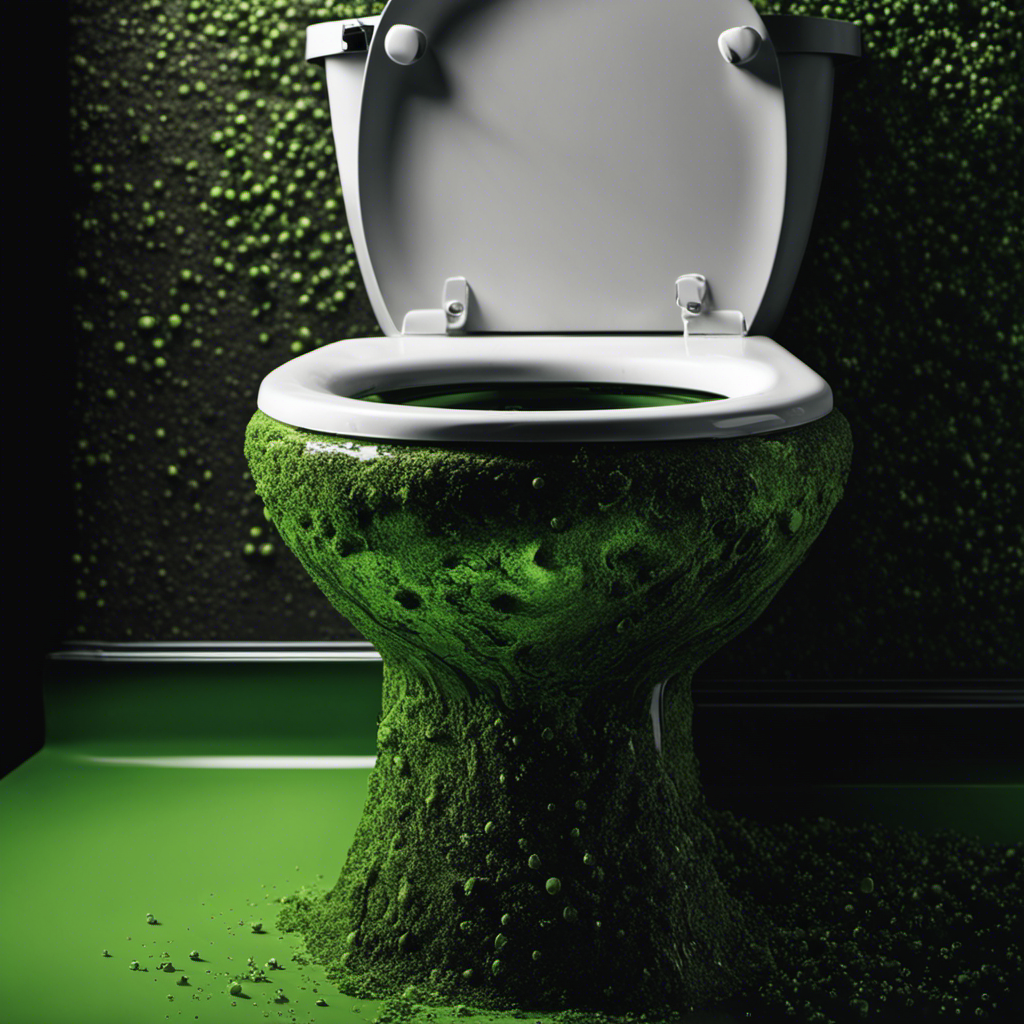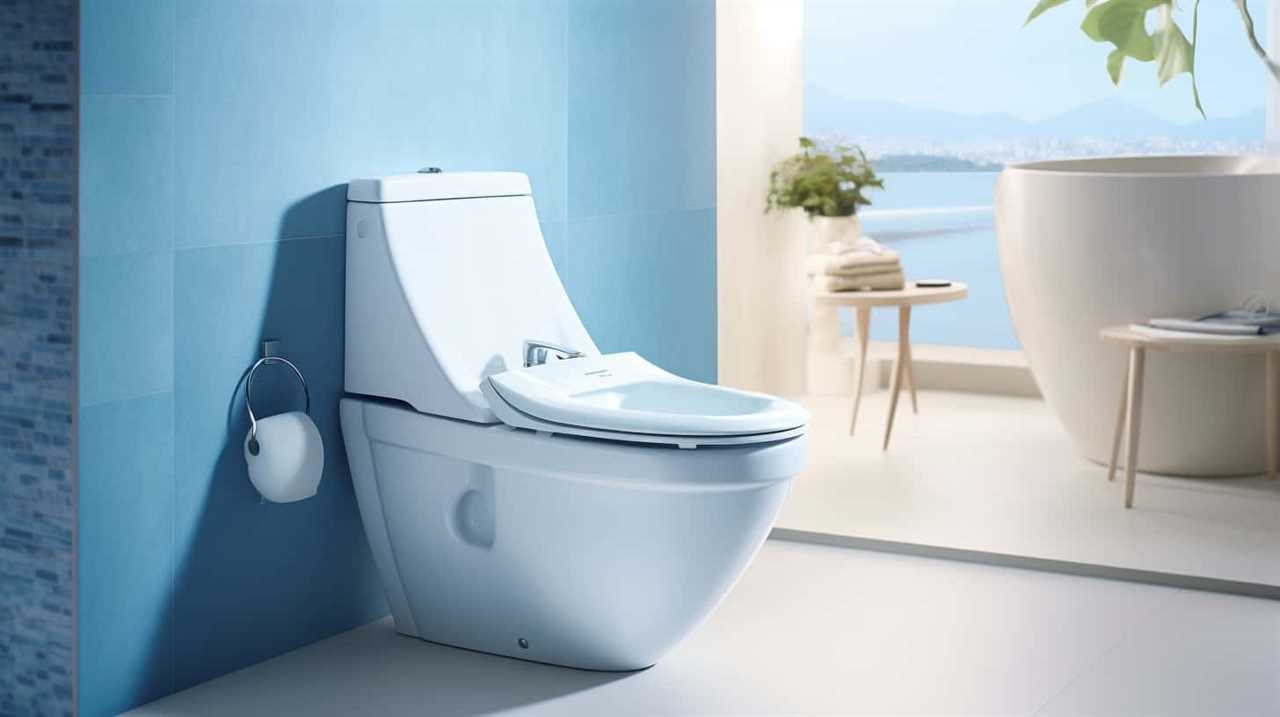I’m constantly plagued by the maddening sound of my toilet running. It’s like a never-ending symphony of wasted water and frustration.
But fear not, dear reader, for in this article, I will explore the common causes of this pesky problem and provide you with the knowledge to fix it yourself.
From the flapper valve to the fill valve, the flush handle to the overflow tube, we will delve into the inner workings of your toilet and discover the solutions to stop that incessant running once and for all.
Key Takeaways
- A faulty flapper valve is a common cause of a running toilet and can be easily fixed by replacing it.
- Understanding and maintaining the flapper valve is important for controlling water flow in the toilet tank.
- A faulty fill valve can also cause a running toilet and may require DIY fixes or professional help.
- Troubleshooting the flush handle and chain, as well as addressing issues with the overflow tube, can help resolve a running toilet.
Common Causes of a Running Toilet
One of the most common causes of a running toilet is a faulty flapper. A flapper is a rubber valve that controls the flow of water from the tank into the bowl. Over time, the flapper can become worn out or misaligned, causing water to continuously leak into the bowl.
This constant flow of water not only leads to higher water bills but also increases toilet repair costs. Fortunately, fixing a faulty flapper is a relatively easy DIY toilet fix. All you need to do is remove the tank lid, locate the flapper, and inspect it for any signs of damage.
If you notice any cracks or deterioration, simply replace the flapper with a new one. Understanding the flapper valve is essential for resolving a running toilet issue.
Understanding the Flapper Valve
To understand the flapper valve, it’s important to know how it controls the water flow in the toilet tank. The flapper valve is a crucial component of the toilet’s flushing mechanism. It is located at the bottom of the tank and is connected to the flush handle by a chain. When the handle is pressed, it lifts the flapper valve, allowing water to flow from the tank into the bowl, resulting in a flush. Once the tank is empty, the flapper valve closes, stopping the water flow and refilling the tank.
To ensure proper functioning of the flapper valve, regular maintenance is necessary. Here are some tips for flapper maintenance:
- Check for any signs of wear or damage, such as cracks or warping.
- Clean the flapper valve and its surrounding area to remove any debris or mineral buildup.
- Adjust the chain length to ensure proper seal and prevent water leakage.
If the flapper valve is beyond repair, there are several replacement options available:
- Flapper valves made of different materials like rubber or silicone, offering durability and a better seal.
- Adjustable flapper valves that allow for customization and fine-tuning of water flow.
- Dual-flush flapper valves that provide options for different water volumes, promoting water conservation.
Identifying and Fixing a Faulty Fill Valve
If you’re experiencing a continuously running toilet, it could be due to a faulty fill valve. The fill valve is responsible for refilling the tank with water after each flush. When it malfunctions, water keeps flowing into the tank, causing the toilet to run constantly.
To identify a faulty fill valve, start by lifting the tank lid and observing the water level. If the water continuously rises and spills into the overflow tube, the fill valve might need replacing.
Before calling a plumber, you can try fixing it yourself by following these steps. First, turn off the water supply to the toilet. Then, flush the toilet to drain the tank. Next, remove the old fill valve by unscrewing it from the bottom of the tank. Finally, install the new fill valve and adjust the water level to the manufacturer’s specifications.
If these steps seem too daunting, it’s best to call a professional plumber to ensure a proper fix.
Troubleshooting the Flush Handle and Chain
When troubleshooting the flush handle and chain, you can start by checking if the chain is properly connected to the flush lever. Make sure there is enough slack in the chain for it to move freely but not so much that it gets tangled. If the chain is too short, it may prevent the flush lever from fully engaging, causing the toilet to run continuously.
Here are some additional steps to consider:
- Inspect the flush handle for any damage or wear. If it’s broken or loose, consider replacing it.
- Check the flush lever to ensure it is properly aligned with the flush valve.
- Look for any obstructions or debris that may be preventing the chain from functioning properly.
If you’ve tried these troubleshooting steps and the toilet still continues to run, it may be time to seek professional help or consider replacing parts.
Now, let’s move on to addressing issues with the overflow tube.
Addressing Issues With the Overflow Tube
When it comes to addressing issues with the overflow tube in a toilet, there are a few key points to consider.
First, it’s important to ensure that the water level in the tank is set correctly. This can be adjusted by either raising or lowering the float, which controls the water level.
Additionally, it’s crucial to check for any leaks that may be contributing to the problem, as these can lead to a continuous running toilet.
Correct Water Level
The water level in your toilet may be too high, causing it to keep running. To address this issue, there are a few steps you can take to adjust the water level and ensure proper toilet maintenance:
-
Check the water level adjustment valve: Locate the water level adjustment valve, usually located on the float arm or fill valve. Adjust the valve by turning it clockwise to lower the water level or counterclockwise to raise it.
-
Inspect the fill valve: The fill valve controls the water flow into the toilet tank. Make sure it is working properly and not stuck in an open position.
-
Check for leaks: A leaky flapper or faulty flush valve can cause the water level to rise. Inspect these components and replace them if necessary.
By following these steps, you can successfully adjust the water level in your toilet and prevent it from running continuously.
Proper toilet maintenance is essential for maintaining a functional and efficient bathroom fixture.
Adjusting the Float
To adjust the water level in your toilet, you can start by checking and adjusting the float. The float is a small device that controls the water level in the tank. If the water level is too high or too low, it can cause your toilet to run continuously. Here’s how you can adjust the float:
-
Locate the float: The float is usually a round ball or a cup-shaped device attached to a rod.
-
Adjust the float height: Most floats have an adjustable screw or a clip that allows you to change the height. By raising or lowering the float, you can adjust the water level in the tank.
Here’s a table to help you understand the different causes and solutions for a running toilet:
| Problem | Solution |
|---|---|
| High water level | Lower the float or adjust the screw |
| Low water level | Raise the float or adjust the clip |
| Damaged float | Replace the ballcock |
If adjusting the float doesn’t solve the problem, you may need to consider other solutions such as adjusting the water pressure or replacing the ballcock.
Check for Leaks
Check under the toilet for any signs of leaks. If you notice any water pooling around the base of the toilet or see water stains on the floor, it could be a sign of a leak. Addressing leaks promptly is crucial to prevent further damage and avoid a significant increase in your water bill.
Here are some important things to consider:
-
Inspect the water supply line connections: Check if the connections are tight and secure. Loose connections can cause leaks.
-
Examine the wax ring seal: The wax ring seals the toilet to the floor. If it becomes damaged or worn out, it can lead to leaks.
-
Check the tank and bowl: Look for cracks or damage in the toilet tank and bowl. Cracks can cause water to leak out.
Tips for Preventing a Running Toilet
One way to prevent a running toilet is by regularly checking the flapper valve. The flapper valve is a small rubber piece that seals the bottom of the toilet tank. Over time, it can become worn or misaligned, causing water to leak into the toilet bowl.
To check the flapper valve, simply lift the lid of the toilet tank and observe. If the flapper is not sealing properly or is damaged, it will need to be replaced.
Regularly maintaining your toilet can prevent water wastage and help conserve water. By fixing a running toilet, you can save gallons of water every day.
It is also important to remember that a running toilet can be a sign of a larger plumbing issue, so it is best to address the problem as soon as possible.
Frequently Asked Questions
How Much Water Does a Running Toilet Waste on Average?
On average, a running toilet can waste up to 200 gallons of water per day. This has a significant environmental impact and increases water bills. To conserve water, fix leaks promptly or consider installing a dual-flush toilet.
Can a Running Toilet Cause Damage to the Plumbing System?
A running toilet can potentially cause long-term consequences and has a significant impact on water conservation. It can lead to damage in the plumbing system, resulting in costly repairs and wasted water.
Are There Any DIY Methods to Temporarily Fix a Running Toilet?
Sure, there are some DIY methods to temporarily fix a running toilet. First, try adjusting the water level or replacing the flapper. If that doesn’t work, you may need to call a plumber.
What Is the Typical Lifespan of a Flapper Valve?
The typical lifespan of a flapper valve can vary depending on usage and maintenance. Signs of a worn-out flapper valve include water leaks, constant running, or incomplete flushing. Regular flapper valve maintenance can help prolong its lifespan.
Can a Running Toilet Lead to Higher Water Bills?
Running toilets can cause a surge in water bills, draining your wallet like a leaky faucet. To conserve water and troubleshoot the issue, check the flapper valve, adjust the float, or call a plumber for assistance.
Conclusion
So there you have it, the reasons why your toilet keeps running and how to fix it. By understanding the common causes and troubleshooting the different components, you can easily resolve the issue and save yourself from wasting water and money.
Did you know that a running toilet can waste up to 200 gallons of water per day? That’s enough water to fill a bathtub!
So don’t ignore a running toilet, fix it as soon as possible to conserve water and keep your plumbing in good shape.










